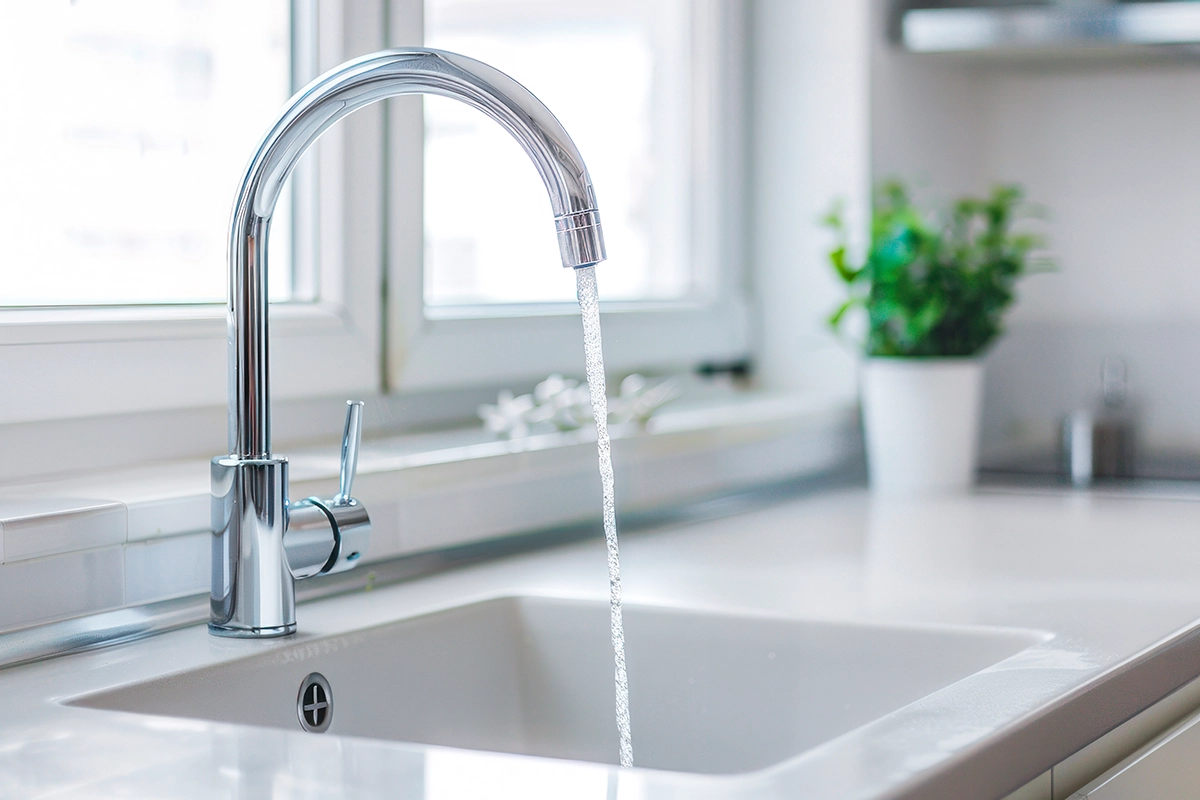If you’ve noticed low water pressure in your kitchen sink, you’re not alone. It’s a common plumbing issue that homeowners in Snellville, GA, often face. While it may seem like a minor inconvenience, low water pressure can make everyday tasks frustrating—like washing dishes or filling pots. Fortunately, understanding the root causes can help you address the issue effectively and even prevent it from happening again.
At True Blue Plumbing, we’ve helped countless homeowners in Snellville resolve kitchen sink pressure issues quickly and affordably. In this blog, we’ll break down the most likely reasons for low water pressure and explain what you can do to fix it.
Common Causes of Low Water Pressure in Kitchen Sink
There are several possible culprits behind low water pressure in kitchen sink setups. Some are easy to fix, while others may require professional help. Here are a few of the most common reasons:
Clogged Aerator
The aerator is the small screen on the tip of your faucet. Over time, it can become clogged with mineral deposits, especially in areas with hard water. When this happens, water can’t flow freely, resulting in weak pressure.
Quick fix: Unscrew the aerator, clean out the debris, and reinstall it. If it’s too corroded, consider replacing it entirely. It’s a cheap and easy fix that can instantly improve your kitchen sink’s pressure.
Buildup in the Faucet Cartridge
Another reason for low water pressure in kitchen sink fixtures is a buildup in the faucet cartridge. This cartridge controls the flow of hot and cold water. Mineral deposits or small bits of debris can restrict water flow, leading to lower pressure.
If cleaning the aerator doesn’t solve the problem, the faucet cartridge might need to be removed and cleaned—or even replaced. While some homeowners choose to DIY this, it can be tricky depending on your faucet model.
Could It Be a Plumbing System Issue?
Sometimes, the problem goes deeper than just your faucet. If both hot and cold water are affected and cleaning the aerator didn’t help, your home’s plumbing system could be the source of the issue.
Corroded Pipes
In older homes around Snellville, it’s not uncommon to find galvanized steel pipes. Over time, these pipes corrode from the inside, which restricts water flow and causes low water pressure in kitchen sink and other areas.
Unfortunately, this isn’t something a homeowner can easily fix. Corroded pipes often need to be replaced. That’s where professional plumbers like True Blue Plumbing come in—we can inspect your pipes and recommend the most cost-effective solution.
Hidden Leaks in the Plumbing
Leaks don’t always present themselves as puddles. Some happen behind walls or under floors and can still lead to a noticeable drop in water pressure. If your water bill has spiked recently, and the pressure at your kitchen sink has dropped, you might have a hidden leak.
A professional pressure test or inspection is often needed to confirm this. Left untreated, hidden leaks can cause water damage and even mold growth. Plus, the EPA notes that the average household can waste nearly 10,000 gallons of water each year due to leaks.
What If Only Hot Water Has Low Pressure?
Now and then, you may notice that only the hot water has low water pressure in kitchen sink fixtures. In that case, the issue might lie with your water heater.
Sediment Buildup in the Water Heater
Sediment from minerals in your water supply can settle in your water heater tank, especially if it hasn’t been flushed in a while. This buildup can block proper water flow, especially to fixtures like your kitchen sink.
Flushing your water heater annually is a good preventative measure. If you’re unsure how or would rather not take the risk, True Blue Plumbing offers affordable water heater maintenance for homeowners throughout Snellville.
Still Have Low Water Pressure in Kitchen Sink?
Even after checking the aerator, faucet cartridge, and water heater, you may still find that water pressure remains low. When that happens, it’s time to bring in the pros.
Municipal Water Supply Issues
Believe it or not, sometimes the issue isn’t in your home at all. Temporary low pressure can result from work being done on city water lines or from supply restrictions.
If your neighbors are experiencing the same issue, it might be worth calling your local water provider. However, if you’re the only one affected, it’s more likely to be a problem inside your home’s plumbing system.
How to Prevent Low Water Pressure in Kitchen Sink
Once you’ve resolved low water pressure in kitchen sink problems, taking steps to prevent future issues is a smart move. Here’s how:
-
Install a water softener if you have hard water, which can prevent mineral buildup.
-
Schedule annual plumbing inspections with True Blue Plumbing.
-
Flush your water heater regularly to reduce sediment accumulation.
-
Replace outdated plumbing components, especially if you have galvanized steel pipes.
Call Us for Low Water Pressure in Kitchen Sink
There’s no reason to live with frustratingly low water pressure in kitchen sink fixtures. Whether it’s a simple fix or a deeper plumbing issue, our experienced team is here to help.
We’ve been proudly serving Snellville homeowners with honest, efficient plumbing services backed by years of local expertise. If you’re dealing with low pressure, strange sounds, or any other plumbing concern, let us take a look.
Call True Blue Plumbing today to schedule your service and get your kitchen sink flowing strong again.


